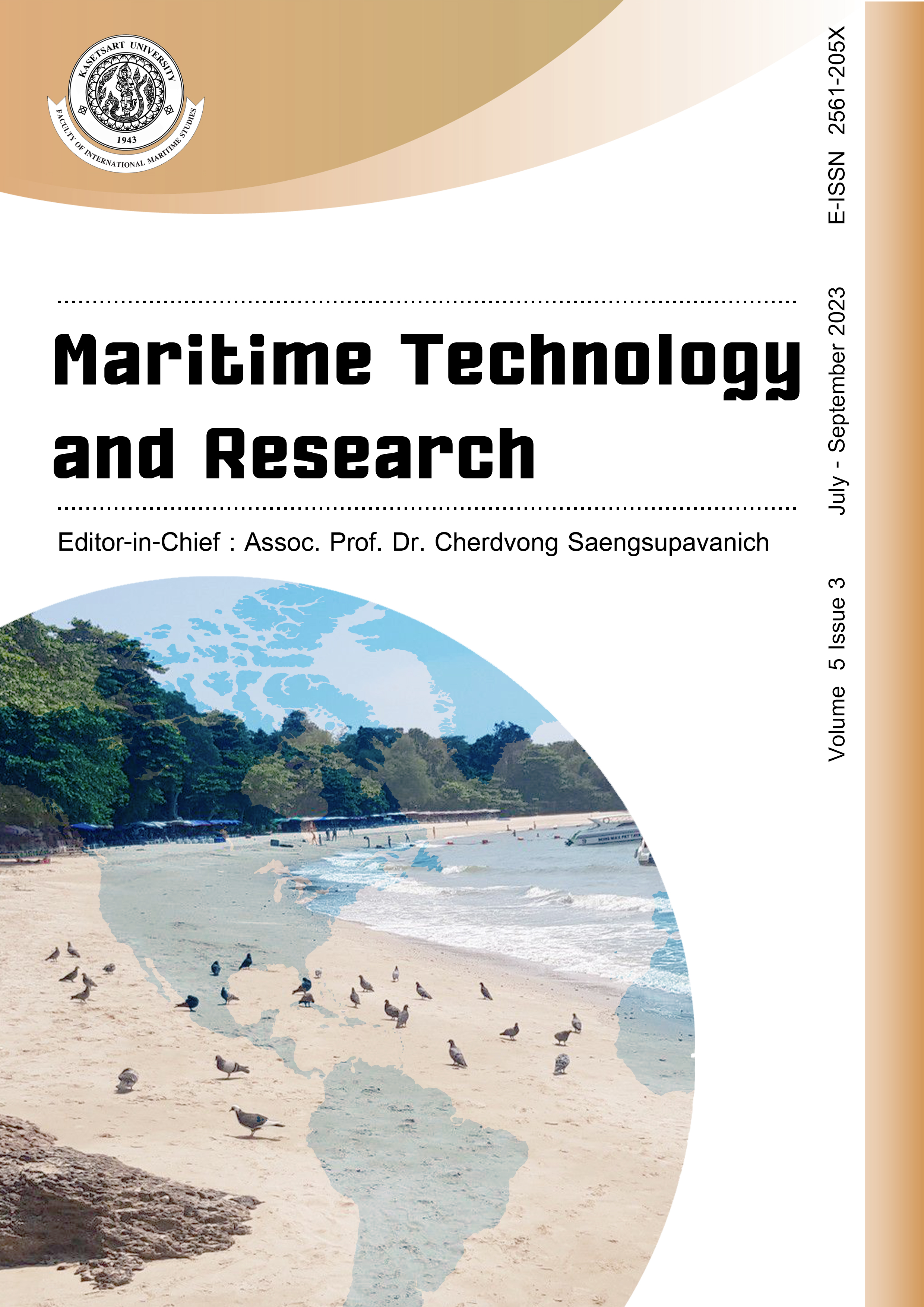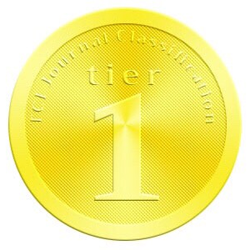Emission and environmental cost estimation of ferries operating in Lake Van
DOI:
https://doi.org/10.33175/mtr.2023.262215Keywords:
Shipping emissions, Lake Van, Ferry, Atmospheric pollution, Environmental costAbstract
Ships, which are the essential elements of maritime transportation, have an indispensable role in world freight and passenger transportation. Besides sea routes, the role played by ships in inland water transport is also very important. In addition to these important economic effects, ships are also a major pollutant source. These emissions have negative effects on human health, cities, and the environment, as well as causing atmospheric pollution. Lake Van is Turkey's largest inland lake, with an area of 3,713 km2, and is an important inland waterway, with an active ferry network operating between Van and Tatvan-Bitlis. In this study, emission calculations of these ferries operating in Lake Van were carried out; it was aimed to develop an emission inventory for ship-related air pollution on Lake Van. Additionally, the environmental (social) costs of these emissions were estimated to assess the total impacts. One year of ship operation data was used for the calculations, and the engine power method was preferred, according to the available data. According to the calculations, the ship-originated emission inventory on Lake Van was determined to be 36,140.54, 107.84, 29.15, 17.49, 990.95, and 11.66 t for CO2, SO2, CO, HC, NOx, and PM, respectively. The total environmental costs of these emissions were calculated to be 40,046,340 €. These results are important in terms of determining the environmental effects of transportation activities in Lake Van, which have not been studied before.
------------------------------------------------------------------------------
Cite this article: Bilgili, L., Şahin, V. (2023). Emission and environmental cost estimation of ferries operating in Lake Van. Maritime Technology and Research, 5(3), 262215. https://doi.org/10.33175/mtr.2023.262215
------------------------------------------------------------------------------
Highlights
- The study covers the emission and environmental cost estimation of maritime transportation in Lake Van
- The total emissions are estimated at 37,297.63 t
- The total environmental cost is estimated at 40,046,340 €
- It is recommended that IMO regulations should strictly implemented in inland waters
References
Agarwal, S. K. (2009). Mitigating Greenhouse Gas (GHG) emissions from international shipping in Post-Kyoto climate policy: Legal issues and challenges. Maritime Affairs: Journal of the National Maritime Foundation of India, 5(1), 73-96. https://doi.org/10.1080/09733150903122925
Andreoni, V., Miola, A., & Perujo, A. (2008). Cost effectiveness analysis of the emission abatement in the shipping sector emissions (pp. 1-71). Institute for Environment and Sustainability (Joint Research Centre). https://doi.org/10.2788/77899
Aygül Özcan. (2021). Van Gölü Bölgesi̇nde Faali̇yet Gösteren Gemi̇lerden Kaynakli Egzoz Emi̇syonlarının Tahmi̇ni̇. Iskenderun Technical University.
Bläsing, M., Amelung, W., Schwark, L., & Lehndorff, E. (2017). Inland navigation: PAH inventories in soil and vegetation after EU fuel regulation 2009/30/EC. Science of the Total Environment, 584-585, 19-28. https://doi.org/10.1016/j.scitotenv.2017.01.107
Brynolf, S., Magnusson, M., Fridell, E., & Andersson, K. (2014). Compliance possibilities for the future ECA regulations through the use of abatement technologies or change of fuels. Transportation Research Part D: Transport and Environment, 28(10), 6-18. https://doi.org/10.1016/j.trd.2013.12.001
Capaldo, K., Corbett, J. J., Kasibhatla, P., Fischbeck, P., & Pandis, S. N. (1999). Effects of ship emission on sulphur cycling and radiative climate forcing over the ocean. Nature, 400(8), 743-746. https://doi.org/10.1038/23438
Chen, D., Tian, X., Lang, J., Zhou, Y., Li, Y., Guo, X., Wang, W., & Liu, B. (2019). The impact of ship emissions on PM2.5 and the deposition of nitrogen and sulfur in Yangtze River Delta, China. Science of the Total Environment, 649, 1609-1619. https://doi.org/10.1016/j.scitotenv.2018.08.313
Christodoulou, A., & Echebarria Fernández, J. (2021). Maritime Governance and International Maritime Organization Instruments Focused on Sustainability in the Light of United Nations’ Sustainable Development Goals. Sustainability in the Maritime Domain. Retrieved from http://www.springer.com/series/8584
Christodoulou, A., & Cullinane, K. (2021). Potential for, and drivers of, private voluntary initiatives for the decarbonisation of short sea shipping: Evidence from a Swedish ferry line. Maritime Economics and Logistics, 23(4), 632-654. https://doi.org/10.1057/s41278-020-00160-9
Christodoulou, A., Dalaklis, D., Ölcer, A., & Ballini, F. (2021). Can market-based measures stimulate investments in green technologies for the abatement of ghg emissions from shipping? A review of proposed market-based measures. Transactions on Maritime Science, 10(1), 208-215. https://doi.org/10.7225/toms.v10.n01.017
Corbett, J. J., Winebrake, J. J., Green, E. H., Kasibhatla, P., Eyring, V., & Lauer, A. (2007). Mortality from ship emissions: A global assessment. Environmental Science and Technology, 41(24), 8512-8518. https://doi.org/10.1021/es071686z
Cullinane, K., & Bergqvist, R. (2014). Emission control areas and their impact on maritime transport. Transportation Research Part D: Transport and Environment, 28, 1-5. https://doi.org/10.1016/j.trd.2013.12.004
De Bruyn, S., Bijleveld, M., de Graaff, L., Schep, E., Schroten, A., Vergeer, R., & Ahdour, S. (2018). Environmental Prices Handbook EU28 Version - Methods and numbers for valuation of environmental impacts. CE Delft.
Doney, S. C., Fabry, V. J., Feely, R. A., & Kleypas, J. A. (2009). Ocean acidification: The other CO2 problem. Annual Review of Marine Science, 1(1), 169-192. https://doi.org/10.1146/annurev.marine.010908.163834
Eyring, V., Isaksen, I. S. A., Berntsen, T., Collins, W. J., Corbett, J. J., Endresen, O., Grainger, R. G., Moldanova, J., Schlager, H., & Stevenson, D. S. (2010). Transport impacts on atmosphere and climate: Shipping. Atmospheric Environment, 44(37), 4735-4771. https://doi.org/10.1016/j.atmosenv.2009.04.059
Feng, J., Zhang, Y., Li, S., Mao, J., Patton, A., Zhou, Y., Ma, W., Liu, C., Kan, H., Huang, C., An, J., Li, L., Shen, Y., Fu, Q., Wang, X., Liu, J., Wang, S., Ding, D., Cheng, J., … Walker, K. (2019). The influence of spatiality on shipping emissions, air quality and potential human exposure in the Yangtze River Delta/Shanghai, China. Atmospheric Chemistry and Physics, 19(9), 6167-6183. https://doi.org/10.5194/acp-19-6167-2019
Fu, M., Ding, Y., Ge, Y., Yu, L., Yin, H., Ye, W., & Liang, B. (2013). Real-world emissions of inland ships on the Grand Canal, China. Atmospheric Environment, 81, 222-229. https://doi.org/10.1016/j.atmosenv.2013.08.046
Gagatsi, E., Estrup, T., & Halatsis, A. (2016). Exploring the potentials of electrical waterborne transport in Europe: The E-ferry concept. Transportation Research Procedia, 14, 1571-1580. https://doi.org/10.1016/j.trpro.2016.05.122
Haglind, F. (2008). A review on the use of gas and steam turbine combined cycles as prime movers for large ships. Part I: Background and design. Energy Conversion and Management, 49(12), 3458-3467. https://doi.org/10.1016/j.enconman.2008.08.005
Houghton, J. T., Jenkins, G. J., & Ephraums, J. J. (1990). Climate change: The IPCC scientific assessment. Climate Change: The IPCC Scientific Assessment. https://doi.org/10.1016/0167-8809(92)90191-d
Huang, H., Zhou, C., Huang, L., Xiao, C., Wen, Y., Li, J., & Lu, Z. (2022). Inland ship emission inventory and its impact on air quality over the middle Yangtze River, China. Science of The Total Environment, 843(6), 156770. https://doi.org/10.1016/j.scitotenv.2022.156770
IMO. (2018). Resolution MEPC.304(72) (adopted on 13 April 2018) Initial IMO strategy on reduction of GHG emissions from ships. Retrieved from https://wwwcdn.imo.org/localresources/en/KnowledgeCentre/IndexofIMOResolutions/MEPCDocuments/MEPC.304(72).pdf
IPCC. (2006). Chapter 2.3: Mobile Combustion (pp. 1-78). 2006 IPCC Guidelines for National Greenhouse Gas Inventories. Retrieved from https://www.ipcc-nggip.iges.or.jp/public/2006gl/index.html
Kågeson, P. (1999). Economic instruments for reducing emissions from sea transport. Air Pollution and Climate Series.
Keuken, M. P., Moerman, M., Jonkers, J., Hulskotte, J., Denier van der Gon, H. A. C., Hoek, G., & Sokhi, R. S. (2014). Impact of inland shipping emissions on elemental carbon concentrations near waterways in The Netherlands. Atmospheric Environment, 95, 1-9. https://doi.org/10.1016/j.atmosenv.2014.06.008
Kollamthodi, S., Brannigan, C., Harfoot, M., Skinner, I., Whall, C., Lavric, L., Noden, R., Lee, D., Buhaug, Ø., Martinussen, K., Skejic, R., Valberg, I., Brembo, J. C., Eyring, V., & Faber, J. (2008). Greenhouse gas emissions from shipping: Trends, projections and abatement potential: Final report to the Committee on Climate Change (CCC). AEA Technology.
Lauer, A., Eyring, V., Hendricks, J., Jöckel, P., & Lohmann, U. (2007). Global model simulations of the impact of ocean-going ships on aerosols, clouds, and the radiation budget. Atmospheric Chemistry and Physics, 7(19), 5061-5079. https://doi.org/10.5194/acp-7-5061-2007
Medda, F., & Trujillo, L. (2010). Short-sea shipping: An analysis of its determinants. Maritime Policy and Management, 37(3), 285-303. https://doi.org/10.1080/03088831003700678
Millero, F. J. (1995). Thermodynamics of the carbon dioxide system in the oceans. Geochimica et Cosmochimica Acta, 59(4), 661-677. https://doi.org/10.1016/0016-7037(94)00354-O
Moldanova, J., Fridell, E., Petzold, A., Jalkanen, J., & Samaras, Z. (2010). Emission factors for shipping-Final data for use in Transphorm emission inventories. Transphorm Deliverable D1.2.3, Type R.
Raven, J., Caldeira, K., Elderfield, H., Hoegh-Guldberg, O., Liss, P., Riebesell, U., Shepherd, J., Turley, C., & Watson, A. (2005). Ocean acidification due to increasing atmospheric carbon dioxide. The Royal Society. Retrieved from http://eprints.ifm-geomar.de/7878/1/965_Raven_2005_OceanAcidificationDueToIncreasing_Monogr_pubid13120.pdf
Schreier, M., Kokhanovsky, A. A., Eyring, V., Bugliaro, L., Mannstein, H., Mayer, B., Bovensmann, H., & Burrows, J. P. (2006). Impact of ship emissions on the microphysical, optical and radiative properties of marine stratus: A case study. Atmospheric Chemistry and Physics, 6(12), 4925-4942. https://doi.org/10.5194/acp-6-4925-2006
Schreier, Mathias, Mannstein, H., Eyring, V., & Bovensmann, H. (2007). Global ship track distribution and radiative forcing from 1 year of AATSR data. Geophysical Research Letters, 34(17), L17814. https://doi.org/10.1029/2007GL030664
Shi, Y. (2016). Are greenhouse gas emissions from international shipping a type of marine pollution? Marine Pollution Bulletin, 113(1-2), 187-192. https://doi.org/10.1016/j.marpolbul.2016.09.014
Smith, T. W. P., Jalkanen, J. P., Anderson, B. A., Corbett, J. J., Faber, J., Hanayama, S., O’Keeffe, E., Parker, S., Johansson, L., Aldous, L., Raucci, C., Traut, M., Ettinger, S., Nelissen, D., Lee, D. S., Ng, S., Agrawal, A., Winebrake, J., J., Hoen, M., … Pandey, A. (2014). Third IMO GHG Study 2014. International Maritime Organization (IMO).
UNCTAD. (2020). Review of Maritime Transport. UN. Retrieved from https://unctad.org/system/files/official-document/rmt2020_en.pdf
Wan, Z., el Makhloufi, A., Chen, Y., & Tang, J. (2018). Decarbonizing the international shipping industry: Solutions and policy recommendations. Marine Pollution Bulletin, 126(9), 428-435. https://doi.org/10.1016/j.marpolbul.2017.11.064
Wang, C., Corbett, J. J., & Winebrake, J. J. (2007). Cost-effectiveness of reducing sulfur emissions from ships. Environmental Science and Technology, 41(24), 8233-8239. https://doi.org/10.1021/es070812w
Web1. (2022). Web1. Retrieved from https://www.tcdd.gov.tr/kurumsal/van-golu-feribot
Winnes, H., Styhre, L., & Fridell, E. (2015). Reducing GHG emissions from ships in port areas. Research in Transportation Business and Management, 17, 73-82. https://doi.org/10.1016/j.rtbm.2015.10.008
Yakın, A., & Behçet, R. (2019). Emission inventory of air pollution based on traffic in Van province. Journal of the Institute of Science and Technology, 9(3), 1567-1573. https://doi.org/10.21597/jist
Downloads
Published
Issue
Section
License
Copyright (c) 2023 Maritime Technology and Research

This work is licensed under a Creative Commons Attribution-NonCommercial-NoDerivatives 4.0 International License.
Copyright: CC BY-NC-ND 4.0








